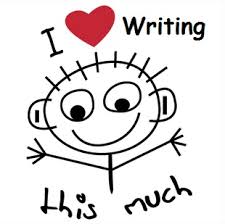It is getting close
to that time again, PARCC testing. As you know, in the classroom writing can
take many forms, including both informal and formal. There are three forms of
writing covered in the CCSSs. Students are expected to learn to establish and
maintain a formal style in both argument
and informative/explanatory pieces. The balance of student writing should
be 65 percent analytical (30 percent opinions and 35 percent to
explain/inform) and 35 percent narrative with a mix of on-demand and
review-and-revision writing assignments.
If your state is
among those using PARCC Assessments, then you probably already know about the PARCC Website and Practice Tests. 
Forms of Writing
Opinion Pieces-Convince others
to think or act in a certain way, to encourage readers to share the writer’s
point of view (POV), beliefs or position (I think, I believe, you should/should
not). For example:
·
Book,
movie, or TV and theater reviews
·
Editorials
·
Feature
columns
·
Letters
to the editor
Informative/Explanatory Texts-Inform the
reader by giving fats, explanations, and other information. For example:
·
Biographies
·
Directions
·
How-to
articles
·
Magazines
·
News
article
·
Recipes
·
Reports
·
Textbooks
Narratives-To entertain, it
gives an account or story, usually tells about something that happens over a
period of time, can be true or imaginary. For example:
·
Anecdotes
·
Autobiographies
·
Fables
·
Fairy
Tales
·
Folktales
·
Friendly
letters
·
Memoirs
·
Mysteries
·
Science
Fiction`
·
Short
stories
·
Stories
Argument Pieces-Support claim
and/or convince others to think or act in a certain way, to encourage reader to
share the writer’s opinion, belief, or position (I think, the facts show, the
evidence shows).
The CCSS do not specify how to teach any form of
writing, I suggest that you follow the Gradual Release of Responsibility Model
(GRRM): I Do It (Minilessons), We Do It (Collaborative Engagement), You Do
It (Independent Application).
By using the GRRM, you will have a framework for
releasing responsibility to your students in a gradual way (this applies to all
students prek-6).
The
three modes of Common Core writing distributed by grade level. Students should practice all three modes of writing,
but there should be a growing emphasis on persuasive writing and a decreasing
emphasis on narrative.
Argumentative
|
Informative/Explanatory
|
Narrative
|
|
4th
grade
|
30%
|
35%
|
35%
|
8th
grade
|
35%
|
35%
|
30%
|
12th
grade
|
40%
|
40%
|
20%
|
Strategies for Success
·
Teach students how to analyze and
critique by annotating text and asking text-dependent questions
·
Teach students how to summarize.
·
Teach students how to compare and
contrast.
·
Use district writing prompts and create
ones of your own that are like them.
Building Sentence Fluency
Sentence
framing
I like .
I like to and .
My is .
When I ,
I like to .
She didn’t go to because .
Sentence expanding
The pony walks.
The white pony walks.
The white pony walks on the road.
The energetic white pony walks on the road
The energetic white pony walks on the road while his mother
sleeps.
Sentence combining
My cat
is black. My cat is little
My black cat is little.



